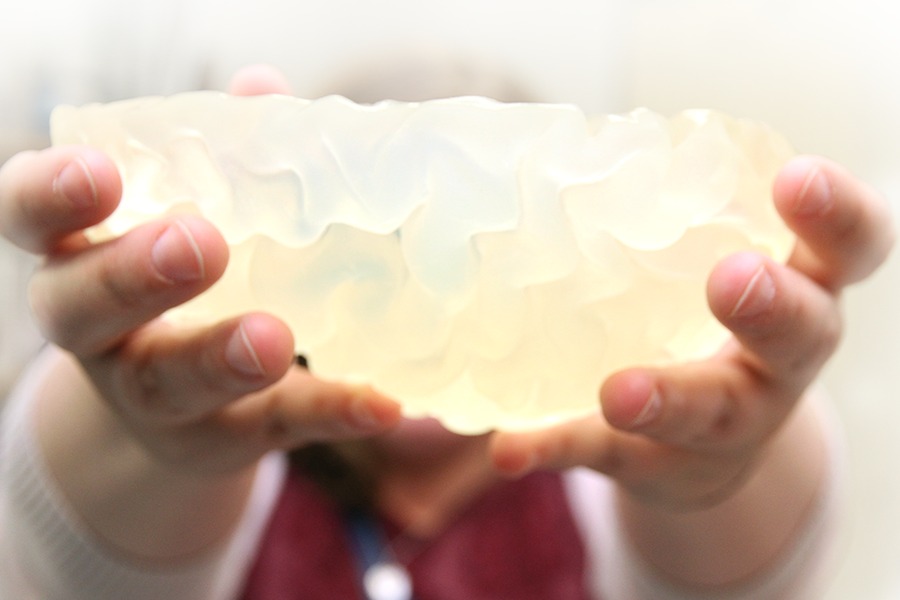
Thinking in 3-D
Bob Wilson has a fancy piece of technology in his office.
By Lesley PorterA technician in the College of Engineering Rapid Prototyping Shop, Wilson operates the university's only professional 3-D printer. The college purchased the Objet Connex500 in 2006, when 3-D printing was still somewhat of a pipe dream. But technology has come a long way since then, explained Wilson, meaning the printer needed significant upgrades last year.
"The machine can now work with more materials, including printing in two materials at once," Wilson said.
Using photopolymer, a material that changes its state when exposed to ultraviolet light, Wilson can print objects ranging from transparent to opaque (or, a combination of both). Depending on the object, it can be made as a hard, rigid plastic or a more pliable, gel-like mold. Wilson has created a variety of small objects, ranging from chess pieces and musical instruments to working wrenches and dinosaur heads, in a variety of colours and textures.
The printer, though large, is remarkably meticulous and can achieve intricate details of up to half a millimeter, Wilson explained, a level of detail that is crucial when printing human and animal part prototypes used in health science research.
Most recently, Wilson worked with Dr. Ivar Mendez in the College of Medicine to create replica human brain hemispheres. Mendez uses the prototypes in his research on Parkinson's disease in the Department of Surgery.

